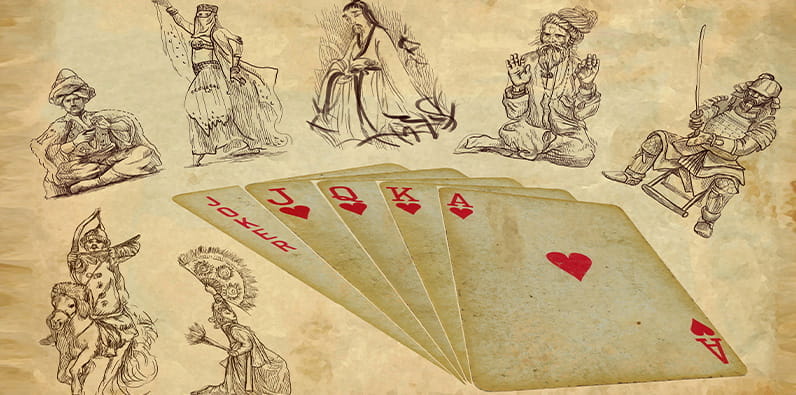When Did Gambling Become Illegal In Colorado
- When Did Gambling Become Legal In Colorado
- When Did Gambling Become Illegal In Colorado Casinos
- When Did Gambling Become Illegal In Colorado Springs
- When Did Gambling Become Illegal In Colorado Right Now
- When Did Gambling Become Illegal In Colorado State
In some states, casinos are restricted to 'riverboats', large multi-story barges that are, more often than not, permanently moored in a body of water. Online gambling has been more strictly regulated, however. The Federal Wire Act of 1961 outlawed interstate wagering on sports but did not address other forms of gambling. The poker pro whose underground club in Manhattan once hosted A-Rod was sentenced to five months in prison Tuesday for operating an illegal gambling business. Edwin Ting, who copped a plea in.
- This is because sports betting hasn’t always been technically legal in the U.S. It’s been around for centuries, but it hasn’t enjoyed the hazy legality that gambling institutions like casinos have enjoyed for quite some time. In fact, until May 2018, only four states in America permitted sports gambling: Montana, Delaware, Nevada, and Oregon.
- Fansbet Casino: 500% bonus up to When Did Gambling Become Illegal In Colorado £100 & 50 extra spins in Berryburst Sign up for an account today at Fansbet Casino, make a minimum deposit of £10 to get your hands on a 500% bonus up to When Did Gambling Become Illegal In Colorado £100 & 50 extra spins in Berryburst.
- All three became gambling meccas, and their names have been associated with some of the most famous Westerners of the 19th century. Wild Bill Hickok was shot to death as he sat in a poker game in a Deadwood saloon, and the hand he held — aces and eights, the ‘Dead Man’s Hand’ — became an enduring legend of the West.
~ by Bob Volpe ~
As towns sprouted in the 19th-century American West — outside Arm forts, at river crossings along wagon trails, in mining districts and at railheads — some of the first structures built were recreational facilities. Recreation for the almost totally male population inevitably meant the triple-W vices of the frontier: whiskey-drinking, whoring and wagering.
Saloons, brothels and gambling halls would appear almost overnight. In the early camps, the structure might be only a lantern-lit, dirt-floored tent, the bar simply a board stretched between two whiskey barrels, the prostitution facility just a cot in a wagon bed for the use of a single female strumpet, and the gambling outfit only a rickety table, a few chairs and a greasy, dog-eared deck of cards.
As the towns grew and prospered, these primitive facilities were replaced by one-story wooden buildings with false fronts to make them appear even larger. And if the community developed into a city, saloons were housed in imposing brick buildings with ornate bars, huge back-bar mirrors and brilliant chandeliers. Some brothels became elegantly furnished parlor houses with attractive ‘boarders’ managed by madams whose names were famous throughout the West. The best-known sporting men of the West presided over and patronized gambling houses that were often the most impressive and elaborately accoutered structures of the cities.
The popularity of gambling in the West can be attributed mostly to the fact that all who left the relative safety and comfort of the East to seek fame and fortune on the frontier were, in a sense, natural-born gamblers. In the early West, gambling was considered a profession, as legitimate a calling as the clergy, the law or medicine.
Leadville, 10,000 feet high in the mountains, blossomed almost overnight into the largest city in Colorado, and at one point its boosters attempted to wrest the state capital away from Denver. At its peak, gambling opportunities were afforded in more than 150 resorts ranging from small saloons to elaborate theaters and concert halls.
Some of the better known were Tom Kemp’s Dance and Gambling Hall, which in 1879 featured vaudeville song-and-dance star Eddie Foy; the Texas House, where proprietors Bailey Youngston and ‘Con’ Featherly
provided a dozen faro tables around the clock; and ‘Pop’ Wyman’s Great Saloon, in which a large sign over the bar read: ‘Don’t Shoot the Pianist — He’s Doing His Darndest.’
Most of the leading Western gamblers, including Ben Thompson, Bat Masterson, Luke Short and Doc Holliday, spent a good deal of time — and money — in Leadville. There is a story that after dropping more than $3,000 at faro one night there, the volatile Thompson in a fury turned over the table, jerked out his six-shooter and shot out all the lights, sending panic-stricken patrons scurrying for the exits.
Holliday, suffering one of those streaks of bad luck and near poverty that plagued all gambling men, shot another sporting man named Billy Allen in Leadville in a dispute over a mere $5
As time went on and western towns became “more civilized” in the Christian-Judeo sense of the word, American laws fluctuated, making gambling illegal, much to the pleasure of the Puritan folk. As the years went on, legalized gambling gathered more support, and various states began accepting the development of state regulated casinos.
The rebirth of Colorado gambling
When Did Gambling Become Legal In Colorado
Colorado gambling enthusiasts were greatly pleased in November of 1990 when casino operators made their way into Colorado. Voters supported the legislation to legalize casino gambling in Colorado, and in 1991 the law was officially passed. The guidelines came along with a limited stakes rule, holding all bets to a maximum of $5, and an ‘adult only’ law requiring Colorado casino gamblers to be at least 21 years of age.
Colorado state government legalized casino gambling in three towns – Black Hawk, Central City and Cripple Creek. Each of these towns is considered National Historic Districts. The purpose of this legislation was to preserve the history of these towns and to help them to foster more economic development, with the assistance of Lady Luck. Prior to limited stakes gaming, all three of these towns were in dire shape.
In 2009, the state’s casinos increased betting limits to $100, added new games and began operating 24 hours a day. In addition to the excitement of gambling, each destination offers fine dining, luxurious hotels and, most importantly, authentic slices of history. Casino revenue has helped preserve and restore the towns’ 19th-century charms, as well as more than 600 other historic properties across Colorado.
In Cripple Creek, after several years of declining gaming revenue, due to wildfires and flooding that made travel to the city difficult, the city petitioned the state Dept of Revenue to allow them to serve
alcohol 24 hours a day, instead of the long held tradition of stopping alcohol service at 2 a.m.
When Did Gambling Become Illegal In Colorado Casinos
Nine casinos won approval to serve alcohol 24 hours a day, making Cripple Creek the latest Colorado city to embrace around-the-clock liquor sales in gambling halls.

Gamblers from Denver Colorado traveling toward Central City will find Black Hawk first, along the route, therefore making it more convenient to place their wagers at Colorado’s Black Hawk casinos. For this reason, Black Hawk has acquired the highest revenue in Colorado casino gambling, amongst the three towns. In an effort to increase revenue and compete with Black Hawk’s significant casino gambling business, Central City has financed an exit directly off Interstate-70 near Idaho Springs. The 4-lane Central City Parkway exit would give travelers substantially less driving time to reach Central City’s Colorado Casinos, while at the same time taking them off the path to
Black Hack.

Another draw for gamblers to visit Colorado’s Central City casinos is the true preservation of national history. Black Hawk’s casinos, on the other hand, have opted for a more glamorous style, constructing their casinos with a glitzy style more akin to Las Vegas. This trend is accentuated by Black Hawk’s 30-plus-story Ameristar resort, a project that changed the face of Colorado gambling.
Cripple Creek is considered to be the middle-man in regards to development, straying more from the historical aspect than Central City, yet avoiding the lights and flamboyance of Black Hawk casinos.
Residents of Colorado frequent the casino gambling facilities, but being a major hot spot for tourists, especially those who come to ski the majestic slopes of the Rockies, Colorado gambling revenue is significantly increased by those vacationing in the mile-high state.
Future lodging boom?
As the popularity of gaming in Cripple Creek has rebounded with a vengeance, following some lean years, as a result of wildfires and flooding that made travel to the city difficult, four of the largest casinos in town are planning to build hotels in the next few years that could double the number of rooms available in the gambling town west of Colorado Springs as it celebrates the 26th anniversary of legalized gambling. This trend is part of an overall effort for the town to become more of a recreational and entertainment destination area.
When Did Gambling Become Illegal In Colorado Springs
American Gaming Group LLC, Century Casinos Inc., Full House Resorts Inc. and Triple Crown Casinos Inc. all are planning to add rooms to help solve a lodging shortage in Cripple Creek, which has just 450 rooms for customers of its 12 casinos and other visitors to the historic mining and gambling mecca. Those rooms boast an occupancy rate of more than 90 percent – by comparison, Colorado Springs-area hotels averaged 64.8 percent last year – and sell out for special events that frequently lure thousands of visitors to the city, said Steve Kitzman, Cripple Creek’s director of marketing and special events.
Plans last year were approved for the renovation and expansion of the old Palace hotel, a revered gem since the gold rush boom, located on Bennett Avenue. The historic hotel property is currently owned by Century Casinos. Although the project has been put on hold temporarily, the proposed rebirth of the Palace has commanded much attention and appeared to stimulate more interest in lodging ventures in Cripple Creek.
The planned hotels and expansion come as Cripple Creek’s gaming industry is on a roll – revenue collected by the city’s 12 casinos in the first half of the year was up 3.3 percent from the same period in 2015 to $63.6 million and increased last year by 3.7 percent from 2014 to $128 million, according to the Colorado Division of Gaming.
When Did Gambling Become Illegal In Colorado Right Now
Last year’s annual increase was the first since 2012 and just the second since 2009. Casino profits in Cripple Creek last year were up 22.7 percent to nearly $6 million, just the second profitable year for
the industry since 2008. The industry lost more than $60 million from
2008 to 2013.
When Did Gambling Become Illegal In Colorado State
Still, even with a return to better times, the local gaming industry is operating with considerably fewer devices and games, with a nearly 30 percent decline in Cripple Creek’s gambling lineup since 2008. This has put a strain on city hall, which collects most of its revenue from betting device fees. As a result, the city is exploring the possibility of a lodging tax to help generate more money for special events/marketing and economic and community development. Officials believe that the town’s future prosperity and gaming health hinges on bringing more visitors into town.
A popular old saying in Colorado is, “If you don’t like the weather, stick around 15 minutes.” This alludes to the fast changes in weather patterns that often occur in the state.

One could apply the same saying to gaming in Colorado. Changes take place often and quickly and usually for the benefit of patrons of these establishments. Local gamblers, visitors and even residents are the big winners of Cripple Creek’s great gaming movement.